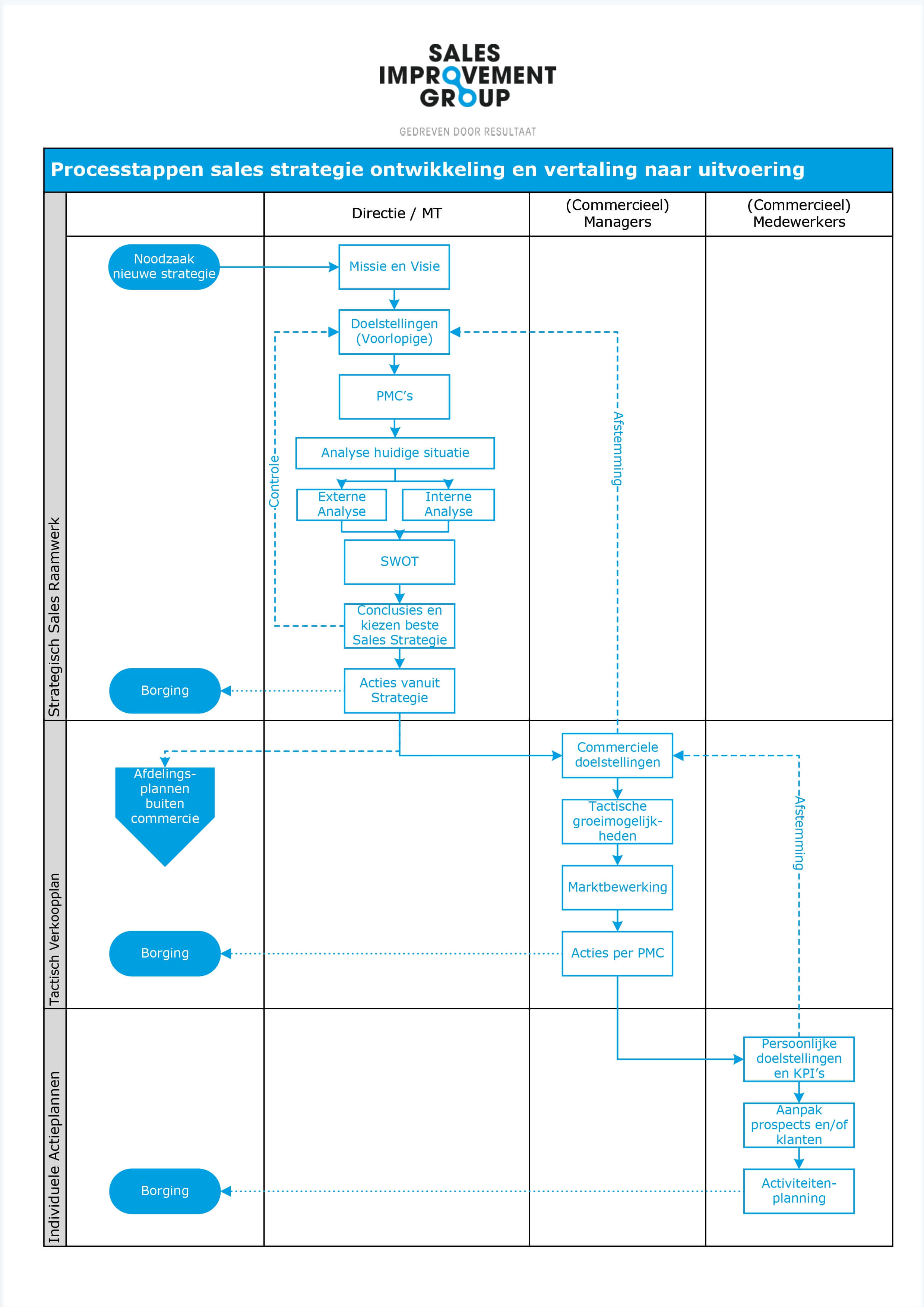Creating a Successful Sales Plan


Last update on: 1 Sept 2025
Reviewed by: ![]() Michel van Hesse
Michel van Hesse
A sales plan is an important document in which you describe the sales goals of your organization. And, perhaps even more importantly, you also document in this document how you will achieve those goals. The sales plan provides a clear goal that everyone in the organization can work towards. It is often thought that writing a sales plan takes unnecessary time and effort. While it is true that writing a successful sales plan does take time and effort, it is well worth the investment. A well-structured sales plan helps achieve goals more quickly and effectively. But what exactly should you include in this plan? To help you get started, we outline the points that should definitely not be missing in the sales plan. This way, you can easily create a successful sales plan for your organization.
Contents:

Before we can tell you exactly what should be included in the sales plan, it's good to know the definition of a sales plan. A sales plan is a document in which you outline the sales goals and the necessary steps to achieve these goals.
So, a sales plan is a document in which you specify the goals you want to achieve, but it is also a document in which you note the steps needed to achieve those goals. To do this, you look at the resources at your disposal and the employees who will contribute.
Creating a sales plan has several advantages. It's a smart idea for both small independent entrepreneurs and large companies. Creating a good sales plan helps you set realistic goals. Additionally, the plan helps all employees have a clear understanding of the goals. Everyone knows better what is expected and what goal they are working towards.
A sales plan doesn't have to be a large and complicated document. In fact, a short but powerful plan of a few pages is sufficient. However, keep in mind that the sales plan is a living document. It's not a plan you create once and then never look at again. By regularly evaluating the sales plan, it stays up-to-date and realistic. The market, the organization, and the circumstances change, so the plan needs to adapt accordingly.
There are many examples of sales plans, but since it is a unique document for each organization, examples are not always very helpful. Although the general content is roughly the same for every company, the actual implementation is unique. To help you get started, we provide some examples of things that should never be missing in any sales plan.
It can be very tempting to immediately address the goals and how to achieve them in a sales plan. However, this is not recommended. For the foundation of a good sales plan, you need to go back to the organization's foundation. You start the sales plan with a description of the product or service you offer. You describe what you offer and how it helps the customer. Essentially, you describe the organization's raison d'être.
You can take the description of your product or service from previously prepared documents. Think, for example, of a strategic plan, account plan, tactical sales plan, a value proposition, or a marketing plan. Although this has already been put on paper before, it is still good to have it clear in your mind for the sales plan. That's why it's important not to skip this step.
The market and the target audience are constantly evolving. Therefore, it's essential to critically review this in the sales plan. Where is the organization currently, what does the market look like, and who are the competitors? Pay attention to where the organization stands and where you want to go in the future.
Now that you know what the organization does, what its added value is for the customer, and what your position in the market is, you can start setting realistic objectives. It's essential to keep in mind that a sales plan is a long-term plan. Short-term goals can certainly be included, but the plan often includes long-term goals as well. Typically, a sales plan is created for a one-year period, but a long-term vision for the coming years can also work well.
When setting objectives, you have to consider quantitative and qualitative goals. Quantitative goals include things like revenue and website traffic, while qualitative goals pertain to aspects like brand awareness and customer satisfaction. In a good sales plan, you set both quantitative and qualitative goals.
You set goals using the SMART technique, which stands for Specific, Measurable, Acceptable, Realistic, and Time-Bound. By setting SMART goals, you make them measurable, allowing you to see which objectives have been achieved over time.
An example of a SMART goal is: "In January 20XX, revenue has increased by 15% compared to January of the previous year."
This goal is specific because it specifies the degree of growth (15%). It's measurable because you can calculate when the revenue has increased by 15%. It's acceptable if all employees support the goal. It's realistic, provided you've done a thorough analysis and can support it with data. Finally, it's time-bound. You aim to increase revenue by 15% within a year.
In a sales plan, you include multiple qualitative and quantitative goals. However, be careful not to include too many. A clear focus on a limited number of goals makes them easier to achieve.
Now that you know which goals you want to achieve, it's time to think about how you will achieve them. A good sales strategy is crucial here. It's possible that you've already put the sales strategy on paper and have also created a concrete acquisition plan. These documents can form the basis for this part of the sales plan. However, it's essential to critically review what you write. Does the strategy still fit your current offering and market? How will you achieve the goals?

In the previous steps, you focused on documenting analyses on paper. Now is the point where you turn this theoretical knowledge into concrete action points. Pay sufficient attention to this because this is the part of the sales plan that is often read the most.
When brainstorming concrete actions, closely examine the sales actions and strategies you've written down in the previous step. Now, translate this into tasks for specific employees. Look at the employees and teams at your disposal and consider the strengths and weaknesses of each individual. This way, you'll know which task is best suited for each employee, which can be a significant help in achieving your goals.
Now that you know what needs to be done and who will do it, all that remains is to consider what resources are needed to achieve the goals. Interpret this broadly. It may be necessary for certain employees to improve their sales skills or knowledge through coaching or a course. You may also need the marketing team to launch specific initiatives. Think about everything that is required and how you will obtain it.
A sales plan is not set in stone. It's a living document that you need to regularly refine and adjust. For example, if you create the plan for a calendar year, it's a good practice to schedule an evaluation moment every four months. This way, you keep your finger on the pulse and can make adjustments promptly if necessary. Plan these moments when writing the sales plan and also include them in the document. This way, everyone is immediately aware of the important evaluation moments. Then save your document, perhaps as a PDF, and your sales plan is ready to be used.
Do you want to write a sales plan as well? The above examples hopefully provide you with some guidance. If you still don't quite get it or if you realize that essential analyses are missing or no longer up-to-date, it can be very valuable to seek the assistance of one of our experts. These sales experts know everything about writing a successful sales plan and are happy to help you create a good sales plan for your organization. You will certainly notice the difference in the number of objectives achieved.
Check out our step-by-step guide for the sales process:

How can I attract new customers? Where can I find the potential target audience for my product or service? What should be my plan of action in this regard? If you provide your contact details here, we will get in touch with you, allowing you to decide whether you wish to proceed to the next step.